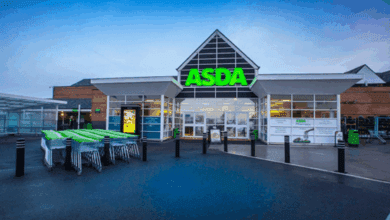Bricks and Clicks: great CRM requires great customer experiences

Register to get 1 free article
Reveal the article below by registering for our email newsletter.
Want unlimited access? View Plans
Already have an account? Sign in
Fifteen or so years ago the retail experience became polarised: retail stores satisfied instant fulfilment but online was the first destination for the cheapest price possible. Online enabled better quality customer purchasing data than was feasible in store, so become the focus of most brands. Industry talk was about when digital would dominate entirely, at the expense of retail.
Fast-forward to 2018 and the landscape has changed. With every brand offering a website and competitors just one search result away, having a retail estate suddenly became less of a liability and more of a differentiator for a brand. A way to distance itself from its competitors and an opportunity to interact with customers and offer the ‘ultimate’ brand experience.
The high street isn’t dead, but neither is online. The future lies in the clever combination of bricks and clicks, and the strategic opportunities the capture of the right kinds of data from both sources will provide.
With click-and-collect, customers enjoy same-day purchasing from a trusted brand, and the feel-good factor of leaving home and returning with exactly what they wanted, last-minute. It beats waiting at home all day for the delivery driver who may or may not turn up with your latest online purchase. Click and collect takes the fear factor out of returning goods, too. It’s all very well finding a great deal on Amazon, but how are you going to send your state-of-the-art fridge back if you don’t like it?
These kind of frictionless customer sales – whether purchasing or returning – is where brands unifying their bricks plus clicks experiences are winning. Click and collect offer customers the best of both worlds, whilst enabling a brand to handle many different needs states of the customer. And the customer experiences the continuity of the brand online and then in-store, as they are recognised and their purchase is handed over seamlessly.
An added bonus of click and collect is that it allows brands to identify which customers interacted with them both online and in-store. However, in the rush to adopt the ‘ultimate’ marketing tool around five years ago – the single customer view – almost everyone overlooked one thing: great customer experiences don’t happen simply because a brand is tracking customers across both (or multi-) sites.
Whilst having customer data definitely helps, you don’t need every single data point to ensure that your CRM is market-best. Instead, brands need the right kind of data to reinforce the key principles of their bricks and clicks strategy; namely frictionless customer sales and unified customer experience. As the industry is now discovering with machine learning – today’s ‘ultimate’ marketing tool – it’s what you do with the outputs, not the technology or the data collection itself.
Notable for their near-zero use of targeted customer marketing (no doubt driven by their goal of placing customer privacy first), Apple have in fact been executing a great CRM experience for years, through their seamless bricks plus clicks journey through retail stores. No matter where you bought your iPhone – online or offline, from Apple direct or from a carrier – if you take it in to an Apple store to get help setting up, transferring data or arranging a repair, they’ll treat you as an Apple customer. All this despite not adopting the traditional CRM strategy of collating as much customer data as possible.
Why is this so? Firstly, Apple understands the importance of the brand experience surpassing sales silos. Secondly, their bricks plus clicks strategy is underpinned by data that doesn’t rely on customer tracking. Apple can use its inventory data from factory to shop floor, so that even if you buy it from somewhere else, Apple can quickly check if it’s still in warranty or eligible for Personal Setup.
It’s obviously in Apple’s interest to time limit their services, but it also offers a great customer experience: customers know they can talk to a person in store and be treated the same by Apple no matter where they got the device from. There are also no pesky warranty forms to fill out and return, and no need for customer tracking. It’s perfect CRM in terms of output: a unified customer experience, even if the strategy is driven by the use of inventory data rather than customer data.
Click-and-collect has worked well because of the seamless customer experience between the benefits of the online store and the feel-good factor of the retail store. It’s not because of the backend systems managing inventory and tracking customers. Good CRM in the age of bricks and mortar will be focused more on the ‘why’ and ‘how’ of driving the best customer experience, and not the technology driving the capture of as much data as possible.
Nicholas Blake is the head of data and digital operations at Armadillo CRM, who specialise in customer relationship marketing.







